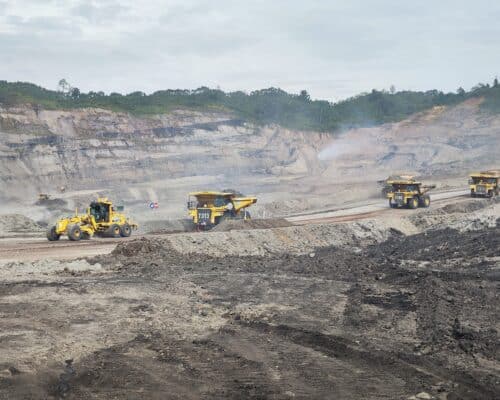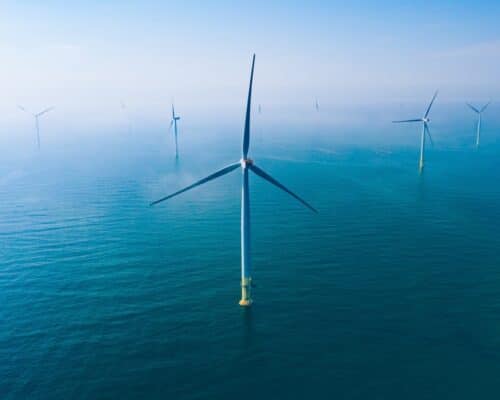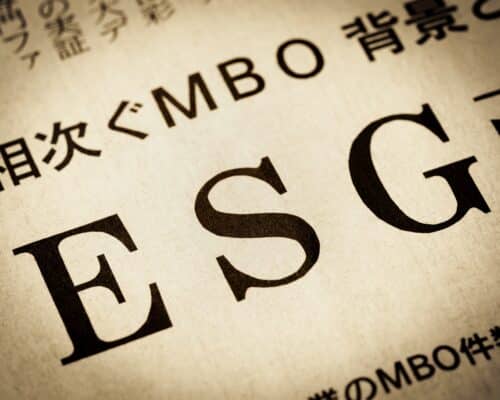What’s Slowing Supply Chain Decarbonisation in the Tech Industry?
Photo: Shutterstock / Kritsana Maimeetook 81
25 December 2023 – by Heba Hashem Comments (0)
Technology companies have the opportunity to be environmental champions. With their influence in the marketplace and focus on innovation, they can vastly contribute to tackling climate change through supply chain decarbonisation.
While not immediately obvious as other industries, the tech sector is a major polluter. In 2021, it was responsible for a staggering 2-3% of global carbon emissions. This is comparable with the aviation sector’s emissions.
Companies like Apple, Amazon, Google and Microsoft have already pledged to become carbon neutral or carbon negative. Several tech firms have also committed to powering their operations entirely with clean energy.
Supply Chain Decarbonisation Not Getting Enough Attention
However, the industry’s supply chain is a bigger concern, as it is a larger source of emissions than operations. According to McKinsey, the typical consumer company’s supply chain accounts for more than 80% of its greenhouse gas (GHG) emissions.
Katrin Wu, a climate and energy campaigner at Greenpeace East Asia, says that supply chain decarbonisation is an often-forgotten part of the industry’s emissions.
“Much less attention has been paid to emissions coming from the electronics sector’s supply chain,” she said in a podcast interview with Energy Tracker Asia.
Semiconductor manufacturing alone, which is a key step in the tech supply chain, is projected to emit 86 million tonnes of carbon dioxide equivalent (CO2e) globally by 2030. This is more than Portugal’s total emissions in 2021, a Greenpeace report shows.
Apple Leads Supply Chain Carbon Neutrality Efforts
American tech firm Apple stands out amongst the pack for committing to decarbonise its supply chain. Since 2019, the company’s supply chain has expanded its renewable energy capacity fivefold, reaching 13.7 gigawatts in 2022. This enabled its suppliers to avoid 17.4 million tonnes of carbon emissions.
“Overall, it’s a good initiative. Apple’s influence is huge. Recognising the important role renewable energy plays in supply chain decarbonisation is crucial today because many companies haven’t even realised that,” said Wu.
More than 300 of its manufacturers have now committed to using 100% clean energy for the production of the company’s products by 2030, according to Apple. The efforts are part of Apple’s goal to bring its entire carbon footprint to net zero by the end of this decade.
Reducing Supply Chain Carbon Emissions Requires Cooperation
Despite the efforts of tech companies, emissions can rise if suppliers don’t cooperate. Moreover, the fragmented nature of supply chains and lack of transparent reporting also pose significant barriers to decarbonisation projects. For example, Microsoft’s value chain consists of at least 400 factories and involves tens of thousands of suppliers.
“When we examine these top suppliers and their decarbonisation and renewable energy transition progress, the results are actually very hard to see,” said Wu, who leads Greenpeace East Asia’s campaign calling for tech company suppliers to transition to renewable power.
As independent businesses with significant revenues of their own, suppliers need to realise it is not another company’s responsibility to keep reminding them to decarbonise, she added.
“Some of the big suppliers stay in the shadow of [big tech companies’] announcements and avoid taking responsibility to reduce their own emissions. As a result, they have very low renewable energy ratios at present.”
For example, Samsung Electronics saw its emissions increase in 2022 compared to 2020, partly due to increases in production. The South Korean corporation is one of the biggest suppliers to the world’s top consumer electronic brands, including Apple. It’s also gearing up to supply additional components for iOS devices.
Samsung admits to being a “large energy user with limited renewable energy supply“. Yet, the company’s timeline to transition to renewables and net-zero emissions is very slow – by 2050.
Furthermore, Samsung relies heavily on low-impact clean energy sourcing methods, such as renewable energy certificates. Consequently, it had the largest carbon footprint of any major tech company in 2021.
Industry Falls Behind on Cutting Supply Chain Emissions: Scope 3
Most concerning is that Samsung has not outlined a clear plan on Scope 3 emissions. This is despite the fact that these accounted for nearly 86% of the company’s GHG emissions in 2021.
Scope 3 encompasses all indirect GHG emissions across a company’s value chain, including from suppliers, transportation, customers and waste management. They often account for the lion’s share of an organisation’s total emissions.
For example, Microsoft’s Scope 3 emissions accounted for as much as 96.71% of its total emissions in 2022. These have also increased since 2020.
Microsoft has made remarkable progress in reducing emissions from its direct activities and committed to becoming carbon negative by 2030. However, it is not doing enough to clean up its supply chain’s energy sources. Several of Microsoft’s suppliers continue to power all their operations with fossil fuels, according to an analysis by The Verge.
The analysis reviewed 27 emissions inventories from Microsoft’s list of top 100 suppliers. It also found that the company’s supply chain emissions grew by 15% to reach 12.5 million tonnes of CO2 between 2020 and 2021. This is as much as Panama’s carbon footprint in 2021.
Apple, too, has backtracked on its environmental information disclosure stance. In 2023, the company stopped requiring that its suppliers publicly disclose data on their greenhouse gas emissions. These were the findings of an October 2023 report by the Institute of Public and Environmental Affairs.
“The increase in carbon emissions of some suppliers reflects the fact that they have not achieved large-scale renewable energy substitution or a high proportion of green electricity substitution,” the report said.
How Can Global Supply Chains Reduce Carbon Emissions?
There are multiple ways for tech companies to tackle supply chain decarbonisation. The most efficient pathway, however, is to evaluate suppliers’ GHG emissions, according to Wu.
“The GHG Protocol is the standard and guidance to measure companies’ emissions. If we look at a supplier’s GHG emissions, we can easily find out where most emissions are coming from.”
“In the case of manufacturing companies, most emissions come from their electricity consumption. So, if we want to deal with this part, it will require reducing over 60% of their emissions.”
To achieve such large reductions in emissions, renewable energy is the easiest answer. This is because solar and wind power technologies have become mainstream and unit costs have dramatically fallen, said Wu.
“The cost of using renewable energy is actually cheap and companies can now purchase it in different ways. They can build their own renewable energy facilities, such as rooftop solar systems. They can invest in renewable energy plans, or they can sign power purchase agreements with electricity producers,” she said.
“I definitely think more needs to be done. More companies can join forces to get this industry cleaner and greener.”





